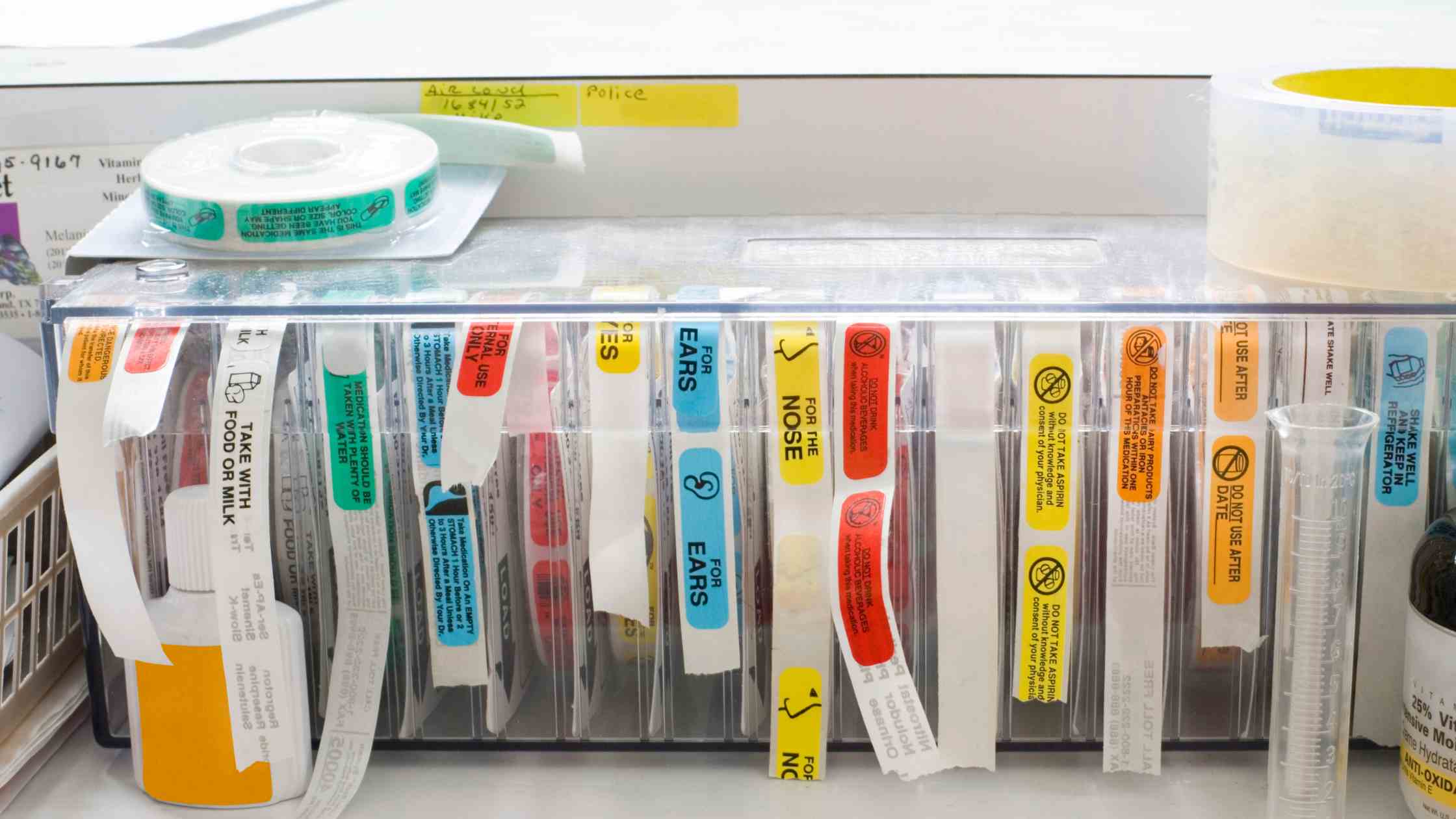It’s been reported that 125,000 American deaths can be linked to poor medication adherence every year. In addition, the healthcare system takes a $300 billion hit annually because of this lack of adherence when medical appointments and hospitalizations are taken into account.1 While top reasons for nonadherence include patients forgetting to take medications, not trusting the medication’s effectiveness, worries of side effects, and not understanding medication instructions, adherence isn’t only up to the patient. The National Library of Medicine reports that nonadherence can also be traced to unclear instructions on labels. In fact, one study found that confusion through packaging and labeling accounted for up to 33% of medication errors.2
What does that have to do with drugstores and pharmacies? It puts them in a great position to be part of the turnaround. Confusion surrounding medication packaging leaves room for improvement in labeling — whether it’s a pharmacy filling a prescription and making sure a patient understands their medication instructions or a store carrying clarifying labels. Stores can do their part to ensure labels are easy to understand or carry additional labels to clear up any confusion on physician instructions. As a pharmacy or store that has these kinds of products, you can help provide labels to clear up medication instructions from dosing, to whether or not to take medications with food, to possible interactions, and more.2
So what different types of medication labels should you be familiar with?3
- Medication Instruction Labels: This label should include all important information for taking the medication, including the name of the prescription and correct dosing amounts.
- Communication Labels: These include additional safety information about the medication’s dosing.
- Expiration Labels: As expected, this label tells how long the medication’s potency is expected to last. It should note the date the medication was opened as well as requirements for storage (for example, ones that need to be kept in a refrigerator) to help meet the expiration expectancy.
- Warning Labels: These include anything from notes on drug interactions to not mixing the medications with alcohol or certain foods.
- Additional labels include reminders of when to take medications (e.g. morning versus bedtime) and disposal instruction labels.
Though not an exhaustive list of the types of labels that are available, this shows that there is a wide variety and points to the importance of clarity in medication instructions.
Another importance of clarity of labels? The same National Library of Medicine study mentioned earlier revealed that after evaluating labels on prescriptions, they found that the labels were optimized for pharmacy promotion rather than for the patient’s understanding of their medication instructions. Often the pharmacy logo was the largest part of the label, not the patient information. In addition, up to 25% of the containers studied failed to include important warning or instruction labels. Dose frequency was even forgotten on 6% of the instructions.2
Between the difficulty in understanding medication instructions and the occasional omission of important information, it’s imperative to be mindful of medication labels and do what you can to help make instructions clear to all of your customers. Prescriptions and the conditions they’re targeting can be confusing in and of themselves, so helping those taking the prescriptions understand them is something that labels can help with.
If it wasn’t already clear, be aware of the importance of having accurate labels on prescriptions and having additional labels on hand to help with clarity of instructions.
Identification. With a large percentage of medication nonadherence pointing to labeling insufficiencies, it’s important to be clear with identification on a prescription bottle — both what the medication is as well as who it is for.
Correct Usage. Dosing instructions should be accurate and clear for how to properly take the medication including frequency, dosage amount, and any additional instructions specific to that patient.
Medication Safety. Taking medications as a doctor prescribes as well as knowing about medication interferences helps to lessen the risk of adverse reactions or side effects. Identifying contraindications or other warnings is also important.
Effectiveness. It should go without saying that taking medications as a doctor prescribes is the best way to make sure the medication is actually doing its job. Around half of all patients who take medications don’t take them as they’re prescribed. The National Library of Medicine reminds us that successful medication adherence involves not only the patient, but the doctor prescribing it and everyone else in between who gets the prescription to the patient.4 Doing anything we can to improve patient education — at any point in the patient’s journey from a diagnosis to picking up medications — will help.
Accurate Monitoring. When a patient takes medications as prescribed, it allows the doctor to monitor the patient’s condition, how well the prescription is actually working, and whether changes need to be made.
Storage. Some medications need temperature-controlled environments to maintain their effectiveness, so making sure this step is clear is important.
Following medication instructions as they’re prescribed is imperative to a patient seeing the intended results. You can help increase medication adherence, effectiveness, and safety for patients by being knowledgeable about medication labels, knowing how to clear up any confusion for those taking them, and having any extra clarifying labels at the ready. To help prevent medication errors, make sure labels are clear and easy to read and understand. The medication adherence of your customers and patients could be affected by your labels. Being confident in your knowledge of labels will help you when providing instruction and helping your customers’ medication adherence.
References
- American Heart Association Medication Adherence: Taking Your Meds as Directed. https://www.heart.org/en/health-topics/consumer-healthcare/medication-information/medication-adherence-taking-your-meds-as-directed
- National Library of Medicine Prescription Drug Labeling Medication Errors: A Big Deal for Pharmacists. https://www.ncbi.nlm.nih.gov/pmc/articles/PMC3035877/
- Technicode Incorporated A Guide to Pharmacy Labels. https://technicodelabels.com/blog/a-guide-to-pharmacy-labels/
- National Library of Medicine Medication Adherence: WHO Cares? https://www.ncbi.nlm.nih.gov/pmc/articles/PMC3068890/





